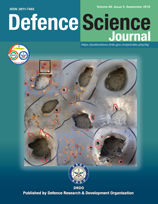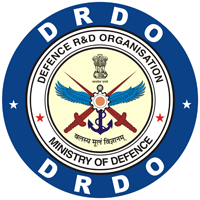Relay based Coupling Scheme of High Speed Communication data, High voltage DC And High Power Pulsed AC for Coaxial Cable
DOI:
https://doi.org/10.14429/dsj.68.11907Keywords:
Passive filters, Coupling schemes, Coaxial cable, Power line communication, Remote systems, TelemetryAbstract
Coaxial cable telemetry is most commonly used in the field of underwater applications like data logging in oil rigs, underwater wireless modem, underwater acoustic measurements, borehole measurements, deep sea telemetry for sediment analysis, airborne sonars, imaging sonars etc. In all the above applications coaxial multicore cables are used. The design and development of relay based coupling scheme which helps to replace the multi core cable with a single core coaxial cable for telemetry application is described. Single core cable is suitable for long distance data communication. Multi core cables are generally heavy and due to the size, may not meet space constraints in complex systems. They are not economical too. The relay based coupling scheme is used to mix or separate the high speed bi-directional communication data, high voltage DC and high power pulsed AC. In single relay scheme one relay is used to switch the centre core of single core coaxial cable. Here the ground is common for both high power AC transmission and high speed bi-directional data path. A dual relay scheme is discussed where two relays are used to switch both the centre core and ground of the single core coaxial cable. This provides more ground isolation and can avoid ground lifting issues while high power AC transmission occurs. The simulation of the coupling scheme was done using PSpice®. A prototype of the coupling scheme was also made for analysis. Filter responses were analysed for each coupling path. The DC coupling filter has 85 Hz cut-off frequency at -3 dB. The cut-off frequency of high speed data coupler is 500 KHz at -3 dB. A 4.3KV peak to peak of 3 KHz and 7 KHz AC signals were transmitted and measurements were taken to analyse the effect of high voltage over different coupling paths. The 3 KHz signal has a peak of 61.88 dB and that of 7 KHz signal, the peak is 62.50 dB. The signal components of 3 KHz signal in the DC path has a voltage level of 9.375 dB and that of 7 KHz signal is 25.63 dB.
Downloads
Additional Files
Published
How to Cite
Issue
Section
License
 Where otherwise noted, the Articles on this site are licensed under Creative Commons License: CC Attribution-Noncommercial-No Derivative Works 2.5 India
Where otherwise noted, the Articles on this site are licensed under Creative Commons License: CC Attribution-Noncommercial-No Derivative Works 2.5 India


